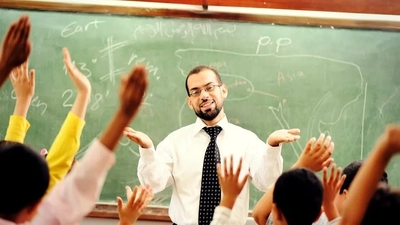
In an age characterized by rapid information exchange and constant technological advancements, the ability to think critically has become more important than ever. Critical thinking equips students with the skills needed to analyze information, make informed decisions, and solve complex problems.
Understanding Critical Thinking
Critical thinking is the disciplined process of actively analyzing, synthesizing, and evaluating information. It is not merely about having opinions but rather involves questioning assumptions, identifying biases, examining evidence, and drawing reasoned conclusions. The foundational components of critical thinking include:
- Analysis: Breaking down information into its constituent parts to understand it better.
- Evaluation: Assessing arguments, claims, and evidence for credibility and relevance.
- Inference: Drawing logical conclusions based on available data.
- Explanation: Articulating reasoning clearly and effectively to others.
- Self-Regulation: Reflecting on one’s own beliefs and thought processes to improve reasoning.
By teaching these components, educators can help students develop a toolkit that empowers them to engage with information more critically.
The Importance of Critical Thinking in Education
1. Empowering Students
In a world inundated with information, critical thinking empowers students to navigate complexities. By cultivating questioning minds, educators enable students to challenge norms, consider alternative perspectives, and articulate their ideas confidently. This empowerment extends beyond academia and nurtures responsible citizens who can contribute positively to society.
2. Enhancing Problem-Solving Skills
Critical thinking is closely tied to effective problem-solving. Students who can think critically are better equipped to approach challenges methodically. They learn to identify potential solutions, weigh the pros and cons, and select the best course of action. This skill set is invaluable not only in academic contexts but also in everyday life and future careers.
3. Encouraging Lifelong Learning
Critical thinkers are inherently curious. They approach learning as an ongoing process rather than a finite experience. By embracing a critical thinking mindset, students develop a love for inquiry that encourages lifelong learning. This curiosity inspires them to seek out new knowledge, adapt to change, and engage in self-directed learning.
4. Preparing for the Future Workforce
The modern workforce demands critical thinking skills. Employers increasingly seek individuals capable of analyzing information, making informed decisions, and working collaboratively to solve problems. By equipping students with these skills, educators prepare them for success in a dynamic job market where adaptability and analytical thinking are essential.
Strategies for Teaching Critical Thinking
Teaching critical thinking is not a one-time event; it is a gradual process that requires intentional approaches. Here are some effective strategies that educators can implement to foster critical thinking skills in their students.
1. Encourage Questioning
Fostering a culture of inquiry is essential for developing critical thinking skills. Educators should encourage students to ask questions and engage in discussions. This can be accomplished by:
-
Modeling Questions: Teachers can model how to ask open-ended questions that encourage deeper thinking. For example, instead of asking closed questions that elicit simple yes or no answers, educators can ask questions like, "What evidence supports this conclusion?"
-
Creating a Question-Friendly Environment: Establishing a classroom environment where students feel comfortable asking questions is crucial. Acknowledge and validate their inquiries, even if they seem trivial. This approach motivates students to explore further.
2. Teach Analytical Skills
Analytical skills are at the heart of critical thinking. Educators can help students develop these skills through various methods:
-
Text Analysis: Instruct students to analyze texts critically. This can include examining author's perspectives, identifying biases, and evaluating the validity of arguments presented. Encouraging students to dissect articles, essays, and literature allows them to engage with information on a deeper level.
-
Case Studies: Utilizing case studies can foster analytical thinking. By analyzing real-life scenarios or dilemmas, students can apply critical thinking to assess outcomes and propose solutions. This approach helps bridge the gap between theory and practice.
3. Incorporate Collaborative Learning
Collaborative learning enhances critical thinking by providing opportunities for students to share ideas and challenge one another’s perspectives. Here are some effective collaborative strategies:
-
Group Discussions: Encourage students to engage in discussions where they can debate various viewpoints on a topic. This allows them to articulate their thoughts while also considering the perspectives of their peers.
-
Peer Teaching: Assign students to teach specific topics to their peers. Preparing to teach requires a deep understanding of the material and the ability to explain complex concepts, which fosters critical thinking.
4. Utilize Problem-Based Learning
Problem-based learning (PBL) presents students with real-world problems that require critical thinking and collaboration to solve. In this approach, students take an active role in their learning process:
-
Identify Authentic Problems: Choose problems that are relevant to students' lives or current events. This relevance encourages engagement and motivation to seek solutions.
-
Facilitate Research and Exploration: Guide students in researching the problem, gathering evidence, and analyzing potential solutions. Encourage them to apply critical thinking principles as they work through the problem-solving process.
5. Use Technology as a Tool
Technology provides valuable resources for enhancing critical thinking skills. Educators can leverage digital tools to encourage critical analysis and engagement:
-
Online Discussion Forums: Implement online platforms where students can engage in discussions and share their insights on various topics. This allows for asynchronous dialogue and fosters deeper exploration of ideas.
-
Digital Research: Teach students to use technology to conduct research. Equip them with skills to evaluate online sources for credibility, bias, and relevance. This approach not only enhances critical thinking but also prepares them for responsible information consumption.
6. Foster Reflection
Reflection is a key component of critical thinking. When students take time to reflect on their learning experiences, they gain insights into their thought processes and decision-making strategies:
-
Journals and Portfolios: Encourage students to maintain reflective journals or portfolios. This practice allows them to document their learning journeys, assess their progress, and identify areas for improvement.
-
Structured Reflection Sessions: Incorporate regular reflection sessions into the curriculum. Ask students to consider questions related to their learning experiences, such as "What strategies worked well?" or "What challenges did I face, and how did I overcome them?"

Creating a Critical Thinking Classroom Environment
The classroom environment plays a vital role in promoting critical thinking. Educators can create an atmosphere that supports inquiry, analysis, and collaborative learning:
1. Foster a Growth Mindset
Encouraging a growth mindset is essential for developing critical thinking skills. Help students understand that intelligence can be developed through dedication and hard work. By emphasizing effort over innate ability, educators cultivate resilience and a willingness to tackle challenges.
2. Celebrate Mistakes
Mistakes are an inherent part of the learning process. Create a classroom culture where mistakes are viewed as opportunities for growth. Encourage students to analyze their errors, understand what went wrong, and learn from their experiences. This approach fosters resilience and encourages students to take risks in their thinking.
3. Provide Diverse Perspectives
Expose students to a variety of viewpoints and opinions. Incorporating diverse perspectives into discussions enhances critical thinking as students learn to evaluate arguments and understand the complexity of issues. This practice also promotes empathy and respect for differing opinions.
4. Engage in Socratic Questioning
Socratic questioning is a powerful tool for promoting critical thinking. Educators can use this method to challenge assumptions and encourage deeper exploration of ideas. By asking thought-provoking questions, educators stimulate students' thinking and encourage them to support their claims with evidence.
Assessing Critical Thinking Skills
Assessment of critical thinking skills can be challenging, as these skills often manifest in nuanced ways. Here are some effective approaches to assess students’ critical thinking abilities:
1. Performance-Based Assessment
Performance-based assessments require students to apply critical thinking skills in real-world scenarios. This approach can include projects, presentations, and problem-solving tasks that allow students to demonstrate their analytical abilities.
2. Rubrics for Evaluation
Create clear rubrics that outline the criteria for assessing critical thinking. This can include evaluating students’ ability to analyze information, articulate their reasoning, and support their conclusions with evidence. Rubrics provide transparency and help students understand expectations.
3. Reflection and Self-Assessment
Incorporate opportunities for students to reflect on their own critical thinking skills. Encourage them to assess their reasoning processes and identify areas for improvement. This self-assessment promotes metacognition and helps students take ownership of their learning.
Conclusion
In a world where information is abundant and often contradictory, teaching critical thinking skills has never been more crucial. By fostering an environment that encourages questioning, analysis, and reflection, educators can empower students to become informed thinkers and responsible decision-makers.
The strategies outlined in this post provide a roadmap for integrating critical thinking into educational practice. By incorporating collaborative learning, problem-based activities, and technology, educators can create enriching experiences that promote critical analysis. As students develop their critical thinking abilities, they gain the tools necessary not only for academic success but also for lifelong learning and personal growth.



